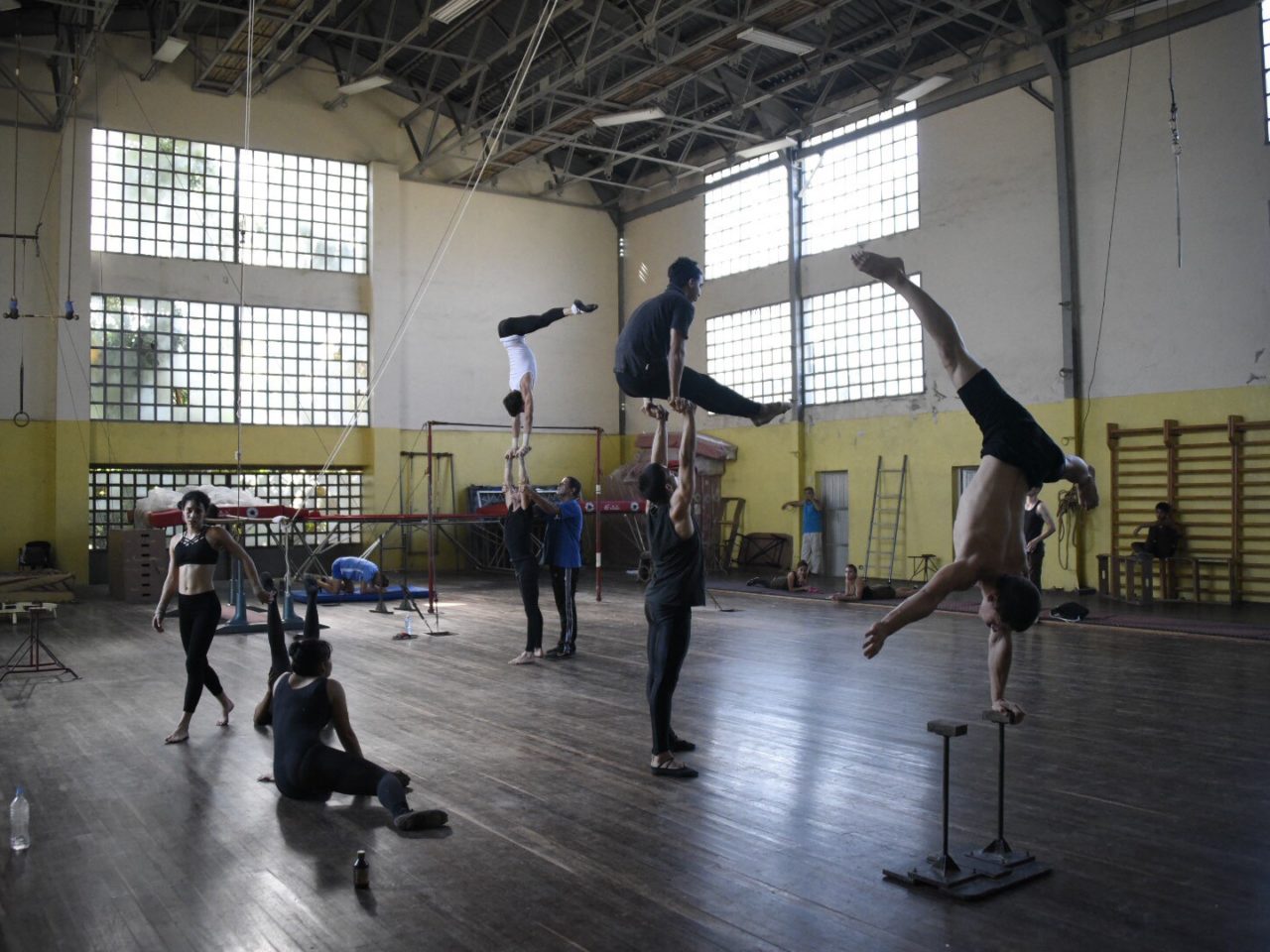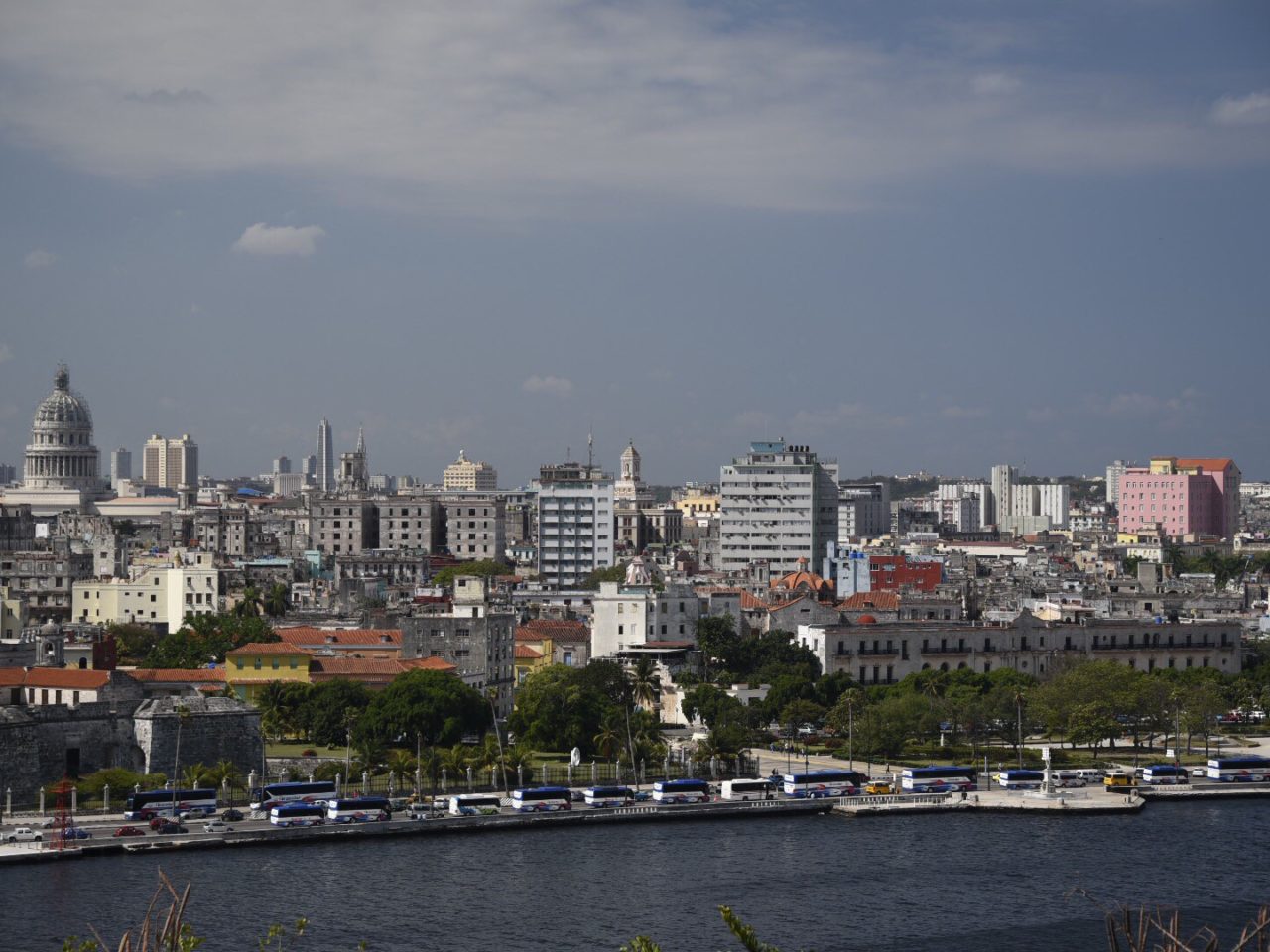
On the bus from Las Terrazas.
We had a little extra time before our morning departure, so I started the day with cigar shopping at the Hotel Comodoro tobacco shop.
Then we took about an hour bus ride to Las Terrazas to visit the Sierra del Rosario Bioreserve. Las Terrazas is a reforestation project with 6 million trees planted in an area where trees were cut down many years ago to make room for coffee plantations and for use as charcoal. Now it’s a small community supported by tourism. We met with the community doctor at the local health clinic to learn about natural and traditional treatments, had coffee at the local cafe, and visited the paper making studio of the artist Ariel.
Lunch was at the Buenavista Cafe – and the mountaintop view of the countryside from the cafe is excellent! At one time the location was a coffee plantation. A short walk from the cafe Anais, our Las Terrazas tour guide, showed us the concrete slabs used by slaves to roast coffee beans in the sun.
Our last stop of the afternoon was at the Soroa Botanic and Orchid Garden. The microclimate of this location is perfect for growing orchids and an afternoon walk.
Tonight is our farewell dinner and the Havana Queens dance show. Tomorrow we head back to Boston.

On the bus in Havana.
Hard to believe that our week here is almost done. We’ve settled into a good traveler routine. Breakfast at the hotel at 8 and on the bus at 8:30. Everyone has claimed a seat on the bus – except for Ana Marie, who likes to sit in different places on the bus to chat with different people. I picked a seat on the right side of the bus with a great full window so I can take pictures as we drive along.
First stop today is the Mercado so we can purchase souvenirs. Humidors and artwork are very popular items for sale.
Next a visit to meet the teachers and students at the La Casa del Niño y la Niña community project – maybe the most important stop on our educational people to people visit. This afterschool program serves primary school students from a lower income community in Central Havana. The program teaches students valuable lessons using visual art and music. We gave the school candy and breakfast bars that the teachers will use as prizes for competitions at the school.
Today’s lunch was at Tocororo Restaurante in Miramar for tapas y tintos. Fresh pineapple juice, cheese, salad, rice, beef stew, and ice cream. FYI – the pineapple juice comes with the option to add rum (YES!) and in Cuba almost every meal comes with ice cream for dessert (YES!)
Following lunch, and some confusion with directions, we visited the Cuban National Circus School to see a performance by the third year students. Selected for admission to the school by examination, graduates of the school find jobs with circuses all over the world – including Cirque de Soleil.
Next back to Old Havana to visit the Havana Club Museum for a tour and to learn about the production process for rum.
Tonight we had free time to explore the plazas and cafes of Old Havana. Then we had dinner and saw a flamenco show at El Meson de la Flota. Eduardo drove us back to the hotel in a ’53 Belair!
Tomorrow we head back out to the countryside to visit Las Terrazas.
On the bus from Viñales to Havana
Last night we dined al fresco at Opera Restaurante an incredible Italian culinary experience in Havana.
Then we traveled back in time for a classic Old Havana nightclub show featuring members of the Buena Vista Social Club.
After the show we took a crazy fast cab ride along the Malecon back to the Hotel Comodoro in a ’59 Rambler.
Breakfast was oceanside at the Hotel Comodoro. Then we got onboard the bus for the three hour drive to Viñales Valley. During the ride our tour guide, Lianet, talked about the religions in Cuba – ranging from Catholicism to Santeria.
First stop in Viñales, a tour of the limestone caves at Cueva del Indio, including a boat ride on the underground river that flows through the cave.
Every so often on these trips you go someplace for an amazing experience. Today we had lunch at Paladar Belle Vista, a small family farm in Viñales with a restaurant on the veranda out back. Serenaded by Yorlandis Castanet’s guitar, lunch was a traditional Cuban meal of vegetable soup, salad, black beans and rice, and roasted pork cooked in a oven in the farm yard. An incredible dining experience with a view of the Viñales mountains in the distance.
Next we visited a local tobacco farm to learn about tobacco farming and to see the art of hand rolling cigars. The farmers also served coffee – made from beans grown on the farm – and topped off with a splash of Havana Club rum.
Back at the Comodoro we enjoyed the sunset. Tonight is a show at the hotel. Tomorrow we visit a primary school.

Started the day with a cold shower. Not unexpected here, but still a bracing way to start the day … and actually a good way to start the day after a couple of Mojitos at the lobby bar the night before!
A quick bus ride brought us to the Jesús Menédez Combinado Deportivo, an old movie theater now used for judo classes and also home of the Havana Queens dance company. We enjoyed a beautiful performance from these talented dancers. So good that we decided to buy tickets to their Friday night show. After the performance we had a chance to talk to the dancers to learn a bit about them and their training – an important part of our people-to-people educational trip.
Then back on the bus and back to Old Havana to take photos at Revolutionary Square – mostly of the classic cars parked there offering rides to tourists.
Next a visit to the Callejón de Hamel community project to meet and see the work of artist Salvador Gonzalez Escalona. His contemporary art is inspired by religious traditions and symbolism and the unique ornamentation of the community project alleyway reflects the creativity of the artist.
After a lunch featuring authentic Cuban Sandwiches at La Casona de 17, we had some free time to go back to Obispo Street to visit some shops and enjoy another Daiquiri at El Floridita.
Then a visit to Habana Compās Dance an amazing group of dancer-percussionists mixing salsa, flamenco, and rumba rhythms. Wow! Lots of great video from this stop on the tour.
Back at the hotel we had time to relax by the pool before dinner. Tonight we’re heading to a nightclub for a show. Should be fun!
Tomorrow we visit the Viñales Valley to see tabacco farming and hand-rolling cigars.

From the Hotel Comodoro lobby bar … where the WiFi is …
I was up early for the Hotel Comodoro buffet breakfast and to unpack since we’re staying at this hotel for the rest of the trip.
We took the bus back down the Malecon, past Old Havana, to East Havana. First stop – the military history park at Morro-Cabaña, followed by picturesque Jesus Christ park with its great view of the harbor and the city of Havana.
Next we took the bus a little further east to the Alamar neighborhood. There we visited an organopónicos community – a local urban organic agricultural project. About 175 people work at the farm, each making about $15-20 per month.
After lunch at Cafe Ajiaco, we took a tour of the Muraleando project – – a community school focused on the arts. There we looked at the artwork outside the school, enjoyed a glass of guava juice, listened to a band comprised of school staff, and had the opportunity to purchase artwork created by the staff.
Next a quick stop at Lennon Park for pictures with the John Lennon statue. Then a ride around town in a classic car. Ours was a ’51 Chevy proudly driven by Hector!
More tomorrow!